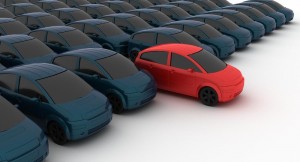Japan Gears up for Automated Driving
Japan adores displaying its superior technological aptitude to the world — and the future holds a perfect opportunity for them to stun us all with automated driving. Right now, the entire automobile industry in Japan is working diligently to take full advantage of all the exposure they’ll receive when the 2020 Olympics and Paralympics come to Tokyo. Japan’s rank as a global leader in the car-making industry is undoubtedly spurring their efforts.

The Impetus Propels the Cause
In April of 2010, the Japanese government announced the “Next-Generation Vehicle Strategy” initiative as part of their environmental protection efforts. It seeks to increase the percentage of hybrid and plug-in hybrid vehicles as well as fuel cell and total electric vehicle sales to 50 percent of all car sales by 2020 (and to 70 percent by 2030). The most recent statistic available from the Japan Automobile Manufacturer’s Association, Inc. (JAMA) is from 2014 which reveals that number to be a mere 6.7 percent. This figure translates to an increase of more than 40 percent of total vehicle sales by 2020.
This endeavor is a monumental undertaking, further burdened by JAMA’s estimates that total next-gen vehicle purchases will likely level off at little more than 10 percent of total car sales by 2020. So, how do you increase the interest in buying an alternatively powered vehicle? Incentives such as subsidies, infrastructure development, and tax breaks will certainly help. JAMA, however, knows what all drivers dream about so they have rolled out a timeline that calls for increased application of automated driving technologies between 2020 and 2030. Driverless cars are on their way, in three not-so-simple steps:
Step 1: Increase the number of automated functions in new vehicles.
Deadline: 2020
– Japan implements a “Strategic Innovation Program” to introduce compatible road traffic systems as well as automated driving systems.
Step 2: Expand technology in driving environments.
Deadline: 2030
– Develop the necessary technology needed for reliable communications and secure data supply infrastructures.
Step 3: Full deployment of advanced automated driving.
Deadline: 2050
– Design and build advanced road environments specifically for driverless cars.
– The Japanese government, the auto industry, and academia work together for regulatory legislation.
The Driver’s Side is the New Passenger Side
Giving up control of the wheel is a proposal that is as exciting as it is scary. You’ve probably noticed, however, that we are gently being conditioned to accept a hands-free driving experience. The parking-assist feature that many manufacturers have installed in their models is one of several perks in the works. This PCmag.com article ranks the best 2015 driver-assist cars. It’s no surprise that five Japanese brands — Honda, Acura, Mazda, Subaru, and Mitsubishi — are in the top 10. These are the next-generation features they boast:
– Blind Spot Detection: A warning light or alert sound lets you know it is not safe to change lanes. An active system will steer your vehicle back into your lane for you.
– Lane Departure Warning: Alerts the driver when the car drifts over the lane lines. An active system will automatically steer you back in your lane.
– Forward Collision Warning: A camera and a radar sensor detect how far away the car in front of you is, sounding an alert when an accident is impending. A prevention system actively applies the brakes for you.
– Active Cruise Control: This technology uses a radar sensor that will adjust your cruise control speed up or down to compensate for the varying speeds of vehicles in front of you, even in stop-and-go traffic.
– Automated Parking: Automated cameras help take control of steering your car into a parallel parking spot; some technology also guides parking into perpendicular spots.
The systems listed above are designed to reduce, if not eliminate, human error while driving. Automated technologies just emerging and still in production will also take over the following maneuvers:
– Lane changing
– Merging into traffic
– Exiting an off-ramp
– Turning at intersections
– Urban driving (completely automated)
– Driverless parking (like an invisible valet service)
The top six Japanese automakers — Toyota, Nissan, Honda, Mazda, Subaru, and Mitsubishi — are enthusiastically engaged in the development of this futuristic technology. All the while, the public’s interest is rising just as planned.
Autonomous Driving vs. Adaptive Driving
Data concerning the vehicle’s surroundings is detected and processed by onboard sensors in lower-level autonomous driving. Adaptive driving uses certain vehicle operations in a higher-level of automation based on communications with road infrastructure, other cars, and roadside signals.
Plan B: The Biofuel Initiative
To loop back to the cause — protection of the environment — JAMA introduced an initiative in March 2016 to reduce fossil fuel consumption by increasing production of alcohol made from sugarcane and cassava (the source of tapioca). Also being promoted is biodiesel, extracted from oil palms to help advance agricultural policies and aid in reducing global warming.
Policies and plans … but what results?
For me the real question is whether Japan’s top-down policies and plans bureaucratic approach is going to produce results in time. After all, the other side of the Pacific you have companies like Tesla and Google already making great strides in autonomous vehicles. Then there is the cash king Apple, currently on the sidelines, but rumored to be looking to get into the automotive business in some capacity.
Will Japan’s reputation for technological innovation in the motor industry still be intact ten years from now, or will their offerings be left behind like the Sony Walkman while the world moves on to iPhones?


